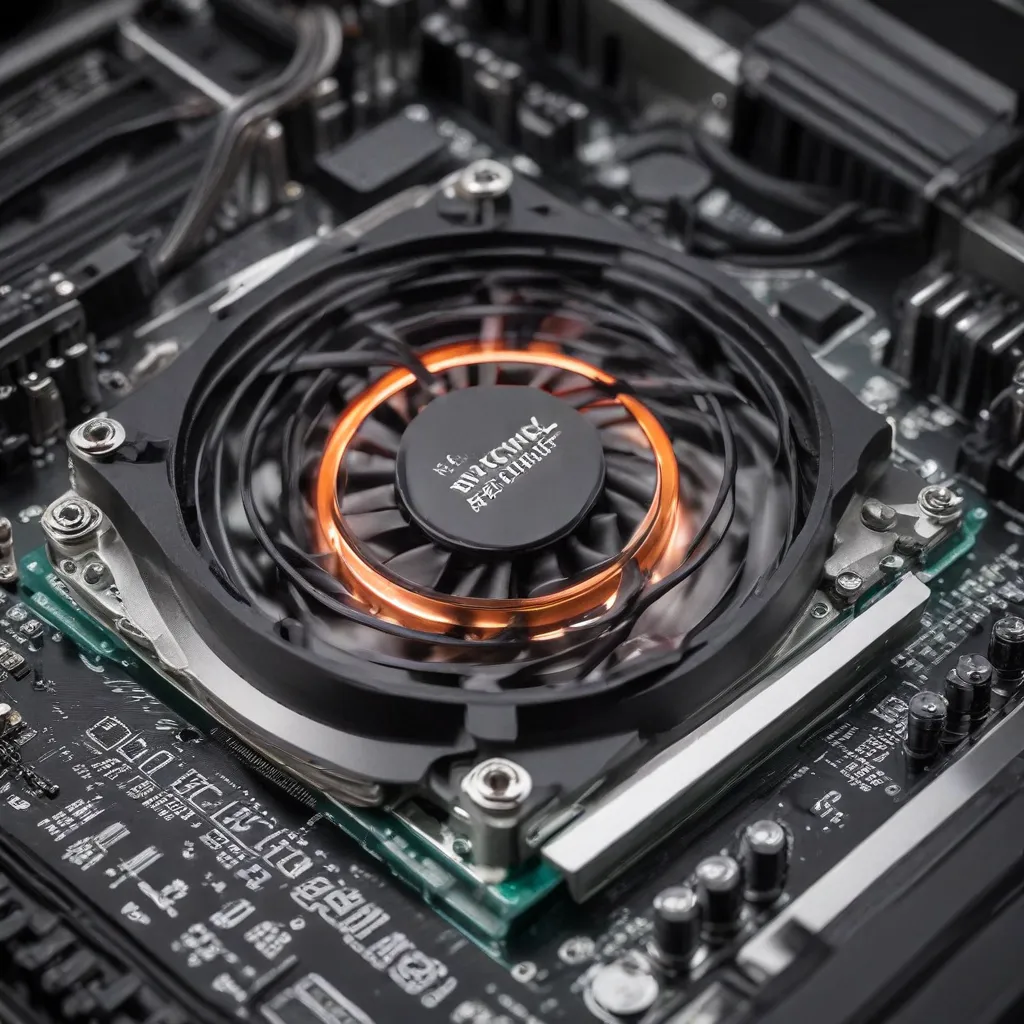
As a seasoned IT professional, I’ve encountered numerous cases where laptop users struggle with heat-related performance issues, especially those tackling demanding applications, heavy workloads, or running overclocked configurations. In this comprehensive article, we’ll explore various laptop cooling upgrade strategies to help you optimize thermal management and unlock the full potential of your system.
Understanding the Thermal Challenges in Laptops
Laptops, by their very nature, present unique thermal challenges compared to their desktop counterparts. The compact design and limited physical space within a laptop chassis can result in heat buildup, leading to throttling, performance degradation, and even system instability. This is particularly evident when running resource-intensive tasks, such as 3D modeling, video editing, or playing the latest games.
The advent of high-performance mobile CPUs and GPUs, coupled with the increasing power demands of modern software, has exacerbated these thermal challenges. Manufacturers strive to balance performance and thermal constraints, but there is often room for improvement through targeted cooling upgrades.
Maximizing Cooling Efficiency: Hardware Upgrades and Modifications
One of the most effective ways to enhance laptop cooling is through hardware upgrades and modifications. These interventions aim to improve heat dissipation and airflow, allowing your system to operate at optimal temperatures.
Replacing the Thermal Interface Material (TIM)
The quality and application of the thermal interface material (TIM) between the CPU/GPU and the heatsink can have a significant impact on cooling performance. Over time, the TIM can degrade or be improperly applied, leading to increased thermal resistance and higher temperatures. Carefully repasting the CPU and GPU with a high-quality, thermally conductive compound can yield noticeable improvements in cooling efficiency.
Upgrading the Cooling Solution
Laptop manufacturers often use stock cooling solutions that may not be adequate for demanding workloads or overclocked configurations. Investigating and installing a more robust cooling solution, such as a third-party heatsink or liquid cooling system, can dramatically improve heat dissipation and allow for greater thermal headroom.
Improving Airflow and Ventilation
Ensuring proper airflow and ventilation within the laptop chassis is crucial for effective cooling. This may involve installing additional fans, modifying the laptop’s internal layout, or using external cooling pads or stands to improve air circulation around the device.
Undervolting and Reducing Turbo Boost Limits
One software-based approach to enhancing cooling performance is to carefully adjust CPU and GPU power limits and turbo boost settings. By reducing the maximum power draw and frequency, you can significantly lower the heat generated, while maintaining acceptable levels of performance. Tools like ThrottleStop and Intel Extreme Tuning Utility (XTU) can assist with these customizations.
Optimizing Thermal Management: Software Strategies
In addition to hardware upgrades, implementing targeted software strategies can also help improve laptop cooling and thermal management.
Power and Thermal Management Settings
Leveraging the power and thermal management settings within your laptop’s BIOS or operating system can be a valuable first step. Adjusting fan curves, power limits, and thermal thresholds can help strike a balance between performance and temperature.
Monitoring and Diagnosis Tools
Utilizing comprehensive monitoring and diagnostic tools, such as HWMonitor, AIDA64, or ThrottleStop, can provide valuable insights into your system’s thermal behavior. These applications allow you to track CPU, GPU, and system temperatures, as well as identify any potential bottlenecks or thermal throttling issues.
Automated Cooling Management
Some laptops come equipped with advanced cooling management software, like ASUS Armoury Crate or Dell Thermal Manager, which offer user-friendly interfaces to customize and optimize cooling profiles. Exploring these built-in tools can help you fine-tune your system’s thermal performance.
Overclocking Considerations and Thermal Implications
For users interested in overclocking their laptop’s CPU or GPU, careful attention to thermal management is crucial. Overclocking can significantly increase power consumption and heat generation, potentially leading to instability, performance degradation, or even permanent hardware damage if not properly addressed.
Before attempting any overclocking, it’s essential to ensure that your laptop’s cooling solution is up to the task. Upgrading the TIM, cooling hardware, and implementing software-based power limit adjustments can help mitigate the increased thermal load and maintain system stability.
Maintaining Optimal Cooling: Best Practices and Ongoing Maintenance
Achieving and maintaining optimal laptop cooling is an ongoing process that requires a combination of proactive measures and regular maintenance.
Regular Cleaning and Dust Removal
Over time, the laptop’s cooling vents and internal components can accumulate dust and debris, impeding airflow and reducing cooling efficiency. Regularly cleaning the laptop’s interior, using compressed air or specialized cleaning tools, can help restore optimal cooling performance.
Monitoring and Adjusting Settings
Continuously monitoring your laptop’s thermal behavior and adjusting power, fan, and thermal settings as needed can help prevent overheating and ensure sustained peak performance. Software tools like those mentioned earlier can assist in this process.
Addressing Specific Application Demands
Some software applications, such as video editing suites or 3D modeling tools, may have unique thermal requirements. Identifying and addressing the specific cooling needs of these applications can help maintain system stability and prevent unexpected shutdowns or performance issues.
Conclusion
Optimizing laptop cooling is a crucial aspect of maintaining the long-term health and performance of your mobile computing device. By implementing hardware upgrades, leveraging software strategies, and adopting best practices for ongoing maintenance, you can effectively manage thermal challenges and unlock the full potential of your laptop, even with demanding applications, heavy workloads, or overclocked configurations.
Remember, the IT Fix blog is dedicated to providing practical tips and in-depth insights to help you navigate the ever-evolving world of technology. Stay tuned for more informative articles that can empower you to make the most of your computing devices.












